Article from Jonite
What are Breeze Blocks & Why Do They Matter for Sustainable Commercial Architecture?
A Brief History of Breeze Blocks
Breeze blocks first gained popularity in mid-century modern architecture, particularly in the 1950s and 1960s. Their modular design, affordability, and versatility made them a popular choice for both residential and commercial buildings, particularly in warmer climates. Architecturally, breeze blocks offered more than just functional support —they became an artistic element, allowing light and air to pass through while providing privacy and a unique aesthetic.
While their usage waned for a time, breeze blocks are now seeing a resurgence in modern architecture. With a renewed focus on sustainable building materials and green design, architects are rediscovering the potential of breeze blocks to serve as both practical and eco-friendly solutions.
Why Breeze Blocks are Perfect for Green Commercial Buildings
Breeze blocks are a highly underrated material in green architecture. Breeze blocks are durable, cost-effective, and low-maintenance. Their perforated design allows for natural ventilation and light diffusion, significantly reducing a building’s energy consumption. This passive environmental control mechanism makes breeze blocks an invaluable tool for creating energy-efficient green spaces in commercial buildings.
How Breeze Blocks Enhance Energy Efficiency
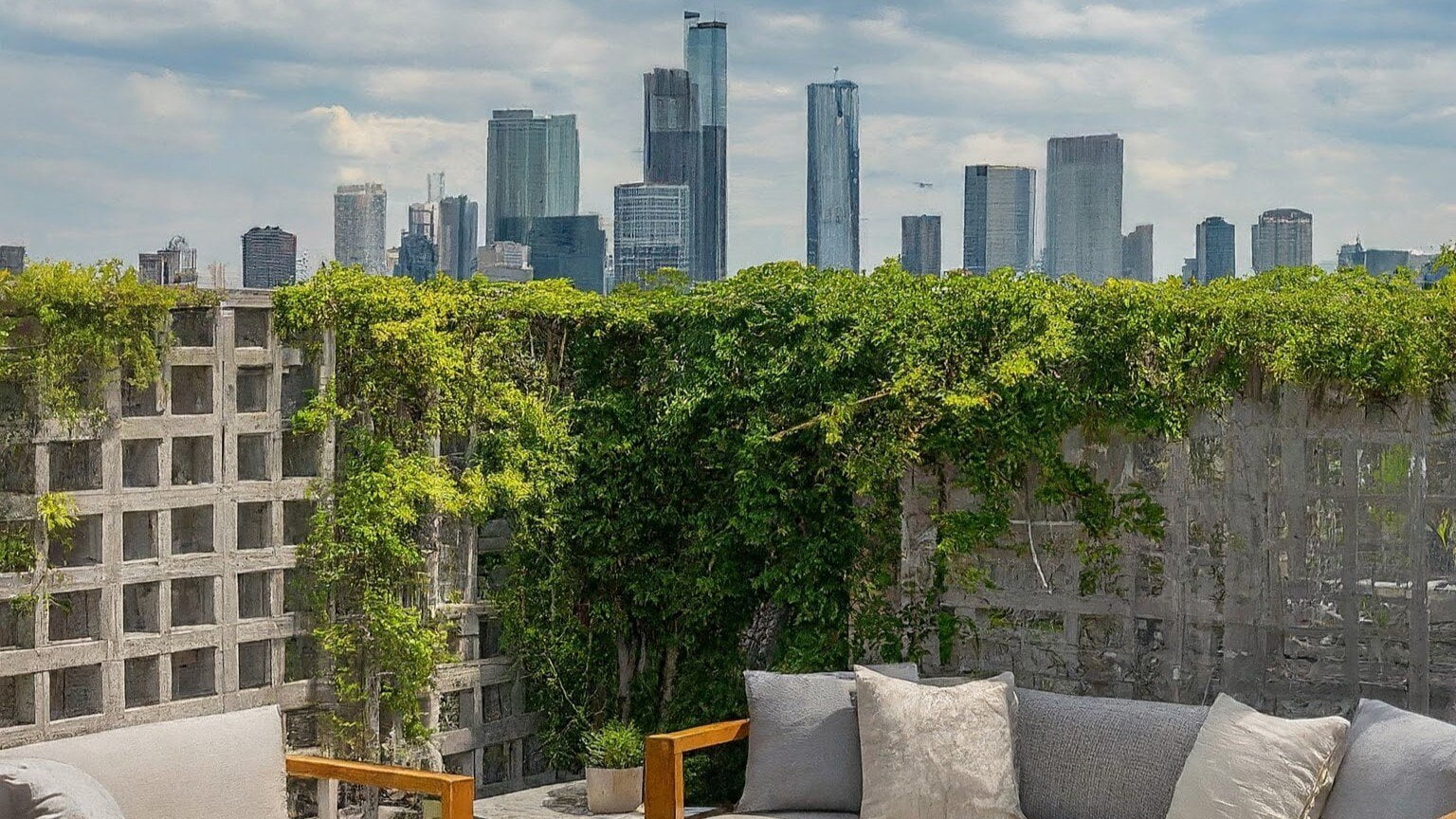
Facilitating Natural Ventilation & Airflow Management
Research from the U.S. Department of Energy shows that buildings optimized for natural ventilation can reduce energy use by 30%. Breeze blocks, with their inherent ability to facilitate airflow, align perfectly with this goal, making them an essential element in sustainable building design.
Breeze blocks are designed with open patterns that allow air to circulate freely. When used in exterior walls, they create a cooling breeze by allowing fresh air to pass through while blocking direct sunlight. This passive cooling effect can significantly reduce reliance on energy-hungry air conditioning systems, particularly in commercial buildings located in hot climates.
By promoting natural airflow, architects can design healthier, more comfortable commercial spaces that reduce energy consumption. Imagine an office building that remains cool and well-ventilated without excessive use of HVAC systems—breeze blocks make that vision a reality
Reducing Energy Consumption with Daylighting
One of the most overlooked benefits of breeze blocks is their ability to diffuse natural light. In commercial buildings, where artificial lighting is often a major energy drain, breeze blocks offer a simple solution. When strategically placed, these blocks allow soft, diffused natural light into interior spaces, reducing the need for artificial lighting during daylight hours.
This not only cuts energy costs but also improves the comfort of workspaces. Studies have shown that natural light can boost productivity and well-being in office environments. In retail or hospitality spaces, this natural lighting creates an inviting ambiance that enhances the customer experience, encouraging longer visits and higher engagement.
Thermal Regulation: Keeping Buildings Cool & Comfortable
In addition to improving airflow and lighting, breeze blocks play a crucial role in regulating building temperature. Concrete, the primary material used in breeze blocks, has excellent thermal mass properties, meaning it can absorb, store, and release heat slowly. This ability to moderate temperature fluctuations can help keep buildings cooler during the day and warmer at night, reducing the need for extensive heating or cooling systems.
When combined with green design strategies like passive solar heating or shading devices, breeze blocks contribute to significant energy savings. For developers aiming to meet stringent energy efficiency standards, breeze blocks are a smart and sustainable choice for both façades and interiors.
Combatting the Urban Heat Island Effect
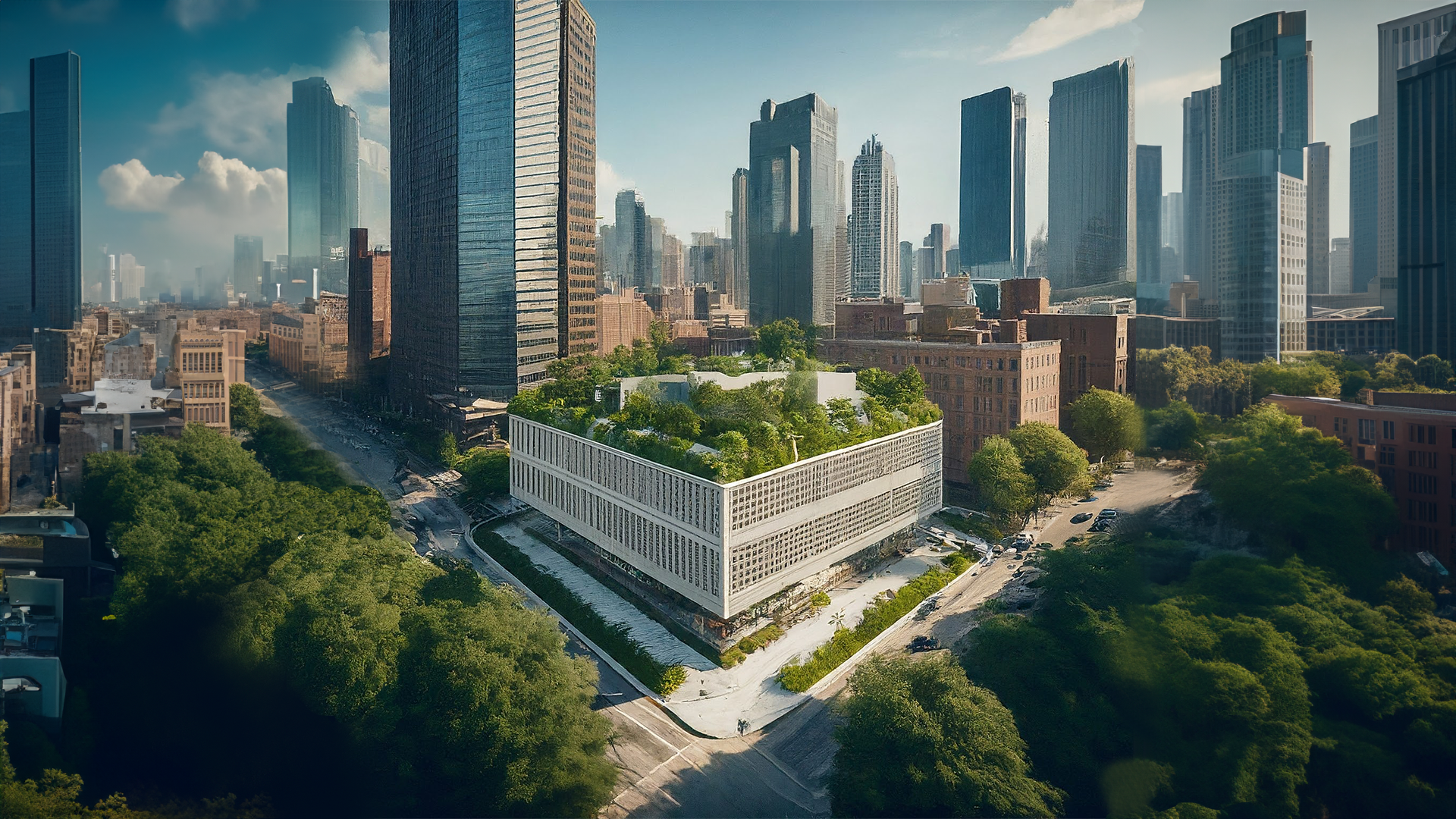
In addition to improving airflow and lighting, breeze blocks play a crucial role in regulating building temperature. Concrete, the primary material used in breeze blocks, has excellent thermal mass properties, meaning it can absorb, store, and release heat slowly. This ability to moderate temperature fluctuations can help keep buildings cooler during the day and warmer at night, reducing the need for extensive heating or cooling systems.
When combined with green design strategies like passive solar heating or shading devices, breeze blocks contribute to significant energy savings. For developers aiming to meet stringent energy efficiency standards, breeze blocks are a smart and sustainable choice for both façades and interiors.
Supporting Renewable Energy Integration
As commercial buildings increasingly adopt renewable energy systems such as solar panels or passive cooling systems, breeze blocks can complement these technologies. Their natural light diffusion reduces reliance on electric lighting, and their ability to moderate temperatures means less energy is needed for air conditioning. When combined with renewable energy sources, breeze blocks help create net-zero buildings that produce as much energy as they consume, paving the way for more sustainable urban architecture.
How Breeze Blocks Create Seamless Indoor - Outdoor Commercial Spaces
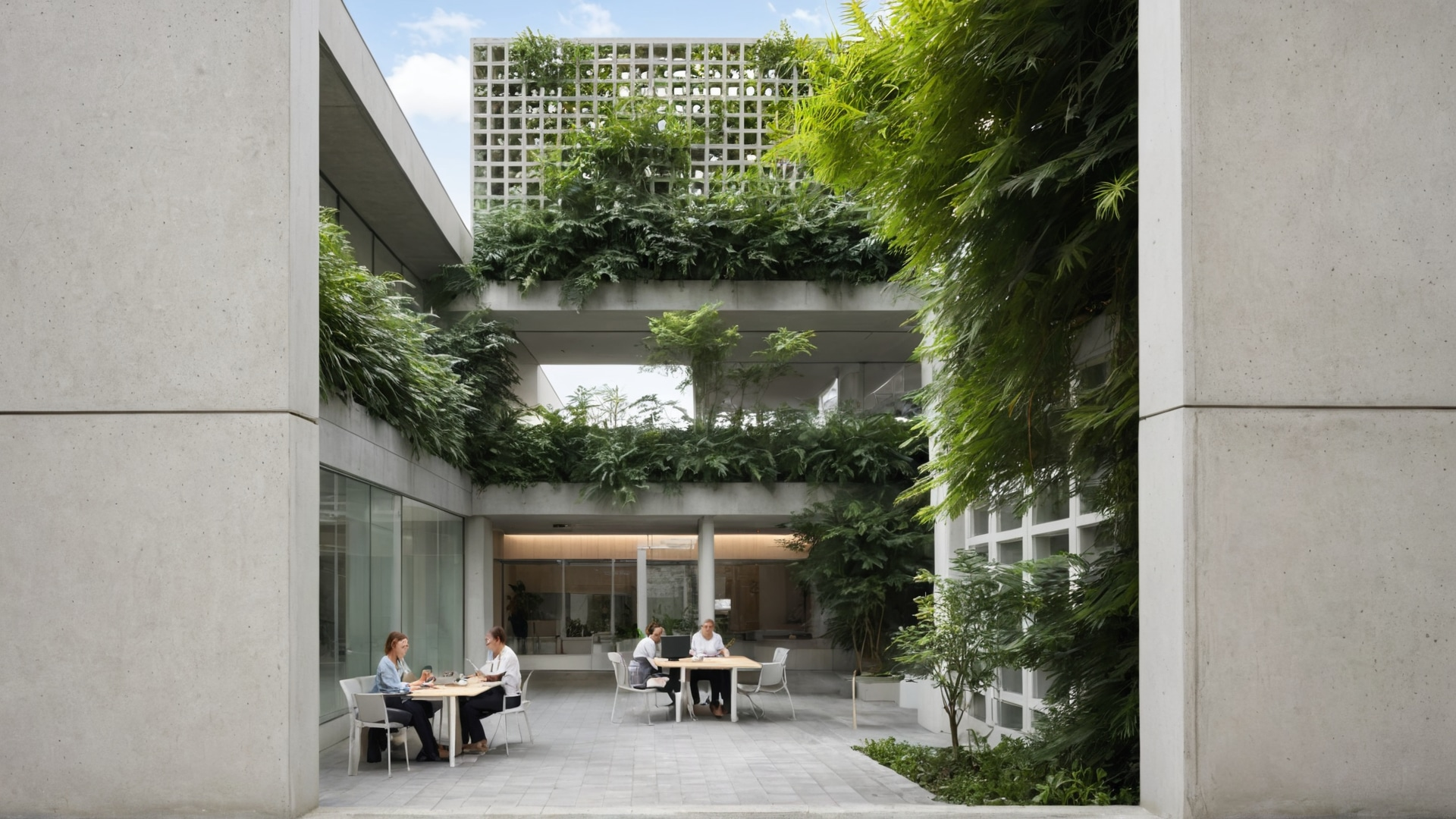
Blurring the Boundaries Between Indoor & Outdoor
One of the most exciting architectural opportunities with breeze blocks is their ability to blur the lines between interior and exterior environments. In modern urban settings, where green space is often limited, this connection is not just aesthetically pleasing — it’s essential. Commercial buildings that can blend indoor and outdoor spaces provide occupants with a sense of openness and well-being that’s difficult to achieve in dense urban settings.
Breeze blocks can create semi-enclosed courtyards, terraces, or rooftop gardens in commercial buildings. These areas allow air and light to flow freely while maintaining privacy and a structured design. Imagine an office building where employees can enjoy a shaded terrace or courtyard that feels connected to the outdoors but still offers the comfort of a protected space. This synergy fosters relaxation, reduces stress, and boosts creativity.
Blurring the Boundaries Between Indoor & Outdoor
Biophilic design — the incorporation of nature into the built environment—has profound psychological benefits. Buildings that foster a connection to nature reduce stress, improve cognitive function, and increase overall happiness for occupants.
Breeze blocks are a perfect medium for biophilic design. They provide the necessary structure for indoor-outdoor spaces while integrating natural light, airflow, and greenery. Office workers in buildings designed with biophilic principles experience greater well-being, while retail spaces with natural elements create more inviting atmospheres that encourage customer engagement.
Integrating Greenery: Creating Living Walls with Breeze Blocks
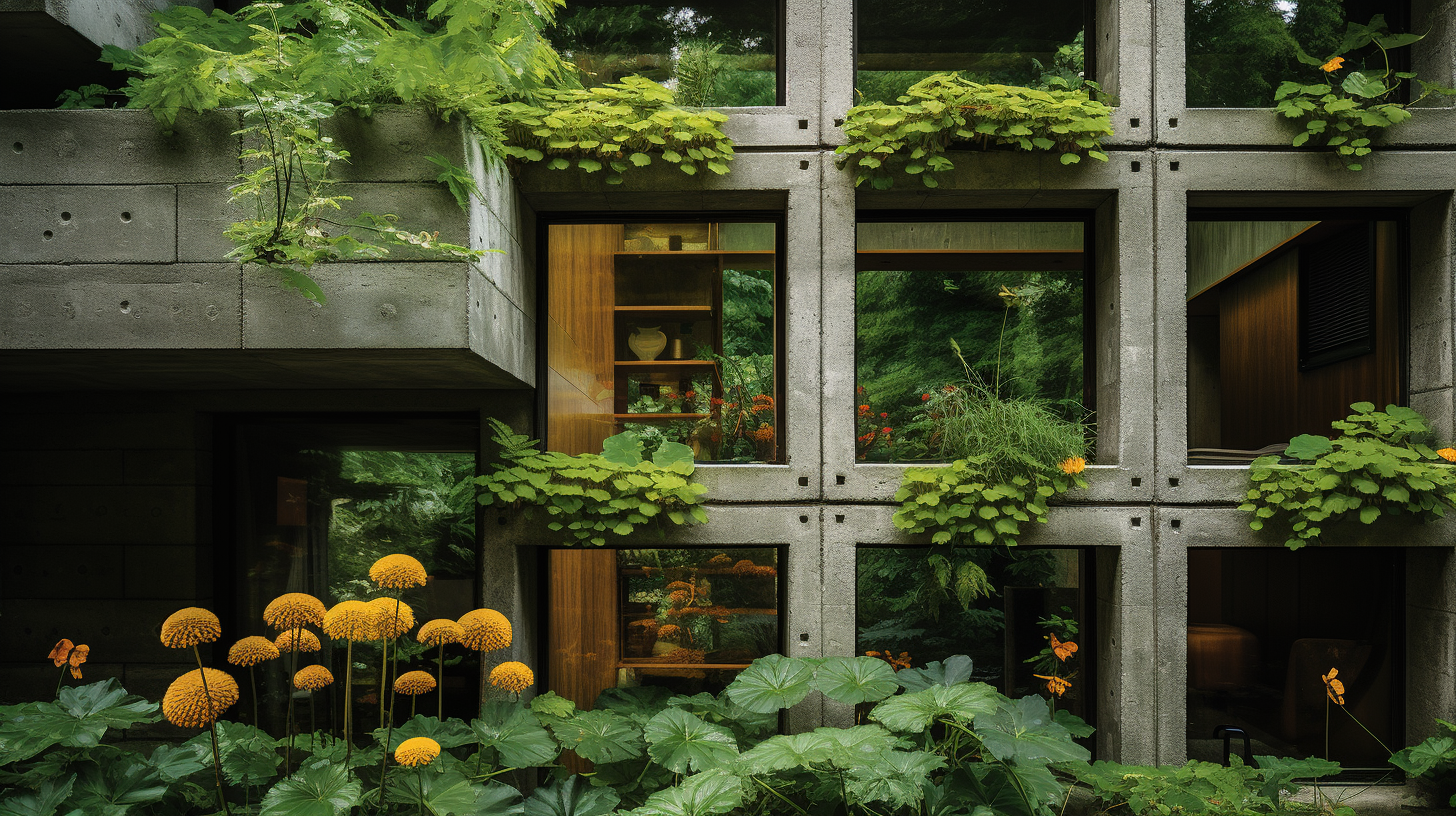
Breeze blocks are an excellent foundation for integrating greenery into commercial spaces. Their perforated structure provides the perfect support for climbing plants and vertical gardens. These living walls improve indoor air quality by absorbing pollutants and releasing oxygen — a major benefit for commercial environments where indoor air can often be stagnant.
Plants also help insulate buildings, reducing the need for heating and cooling systems. By combining breeze blocks with green walls, architects can create vibrant, eco-friendly spaces that attract birds, insects, and other wildlife, enriching urban biodiversity.
Practical Applications of Breeze Blocks in Commercial Spaces
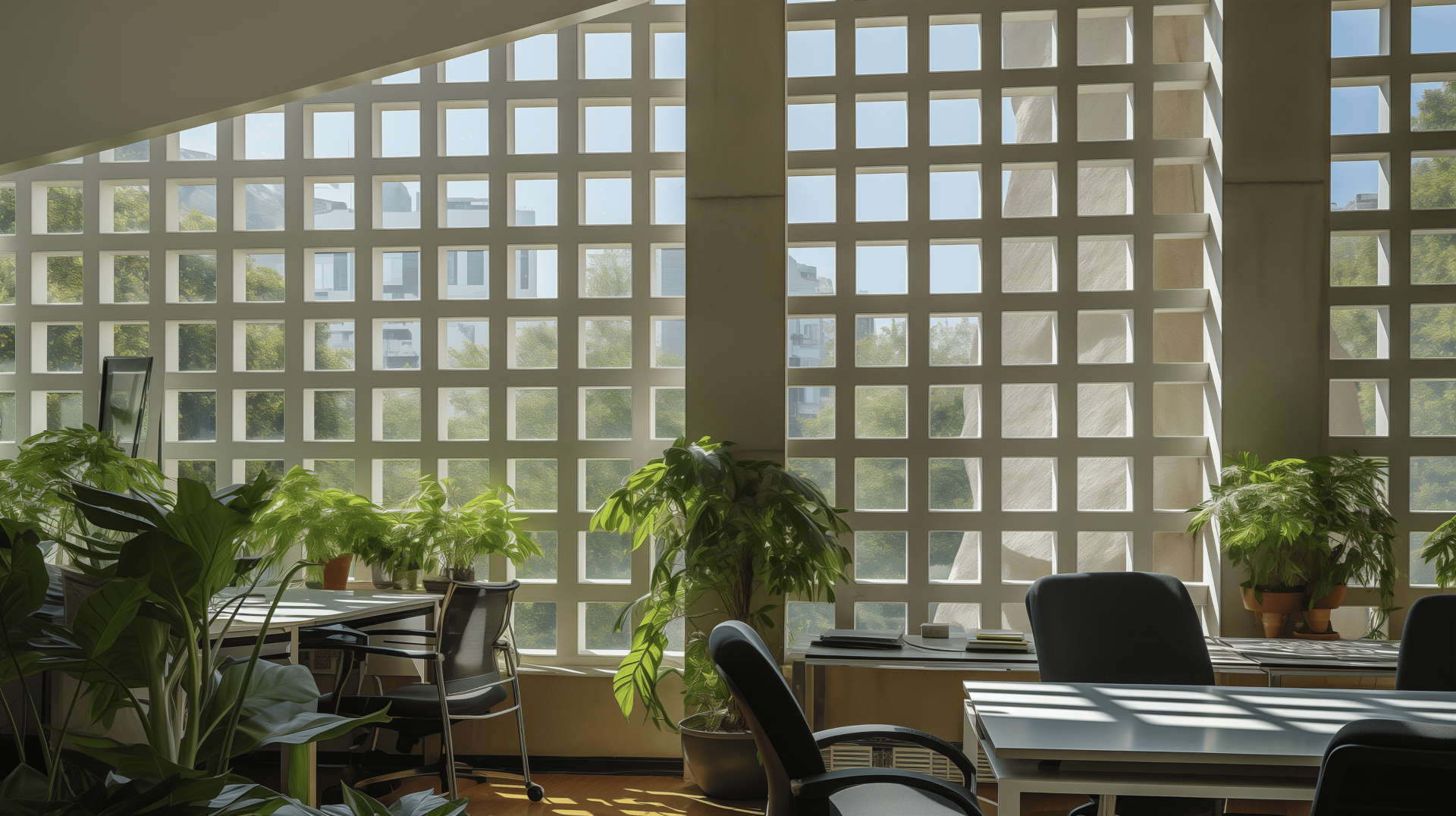
Office Buildings: Healthier, More Productive Work Environments
In today’s workplace, functionality and well-being go hand in hand. Breeze blocks can transform office buildings into open, airy spaces that promote both productivity and comfort. They can be used to design semi-private meeting areas or collaborative workspaces that are naturally ventilated and filled with soft, diffused light.
Incorporating breeze blocks into office buildings isn’t just about sustainability; it’s about creating healthier, more adaptable work environments. Flexible designs are key to meeting the evolving needs of modern businesses, and breeze blocks provide the versatility to create spaces that encourage innovation while keeping energy costs low.
Incorporating breeze blocks into office buildings isn’t just about sustainability; it’s about creating healthier, more adaptable work environments. Flexible designs are key to meeting the evolving needs of modern businesses, and breeze blocks provide the versatility to create spaces that encourage innovation while keeping energy costs low.
Retail Spaces: A Unique & Inviting Customer Experience
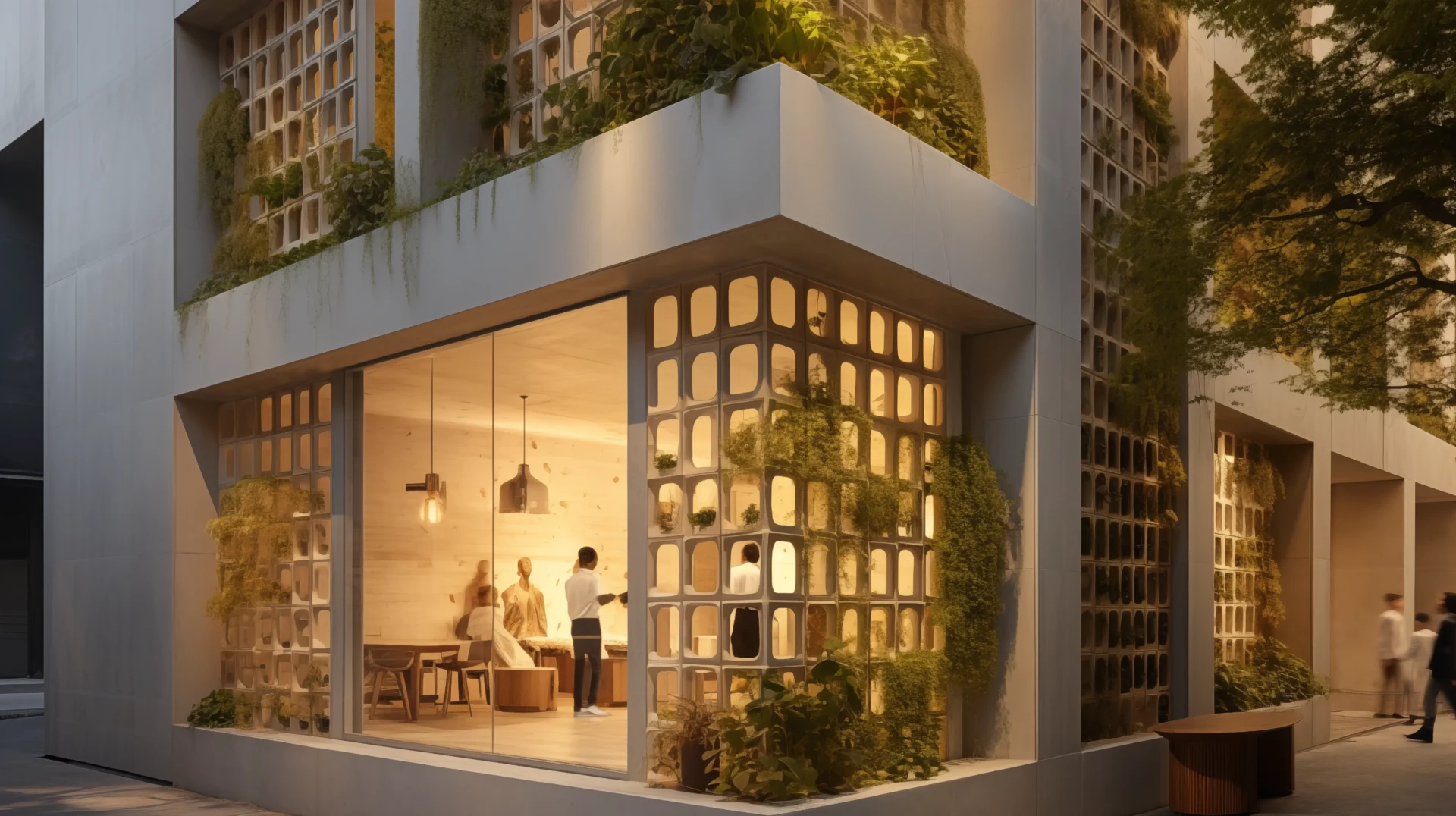
In retail, first impressions are everything. Breeze blocks can create eye-catching facades that not only draw in customers but also enhance their overall shopping experience. Their decorative patterns and ability to diffuse light make them ideal for creating visually striking storefronts that feel open and inviting.
Inside, breeze blocks can be used to build dynamic display areas or partitions that guide customers through the space. By incorporating greenery and natural light, retailers can create environments that encourage shoppers to linger longer and explore more, ultimately driving sales and customer loyalty.
Hospitality: Designing Serene, Sustainable Guest Experiences
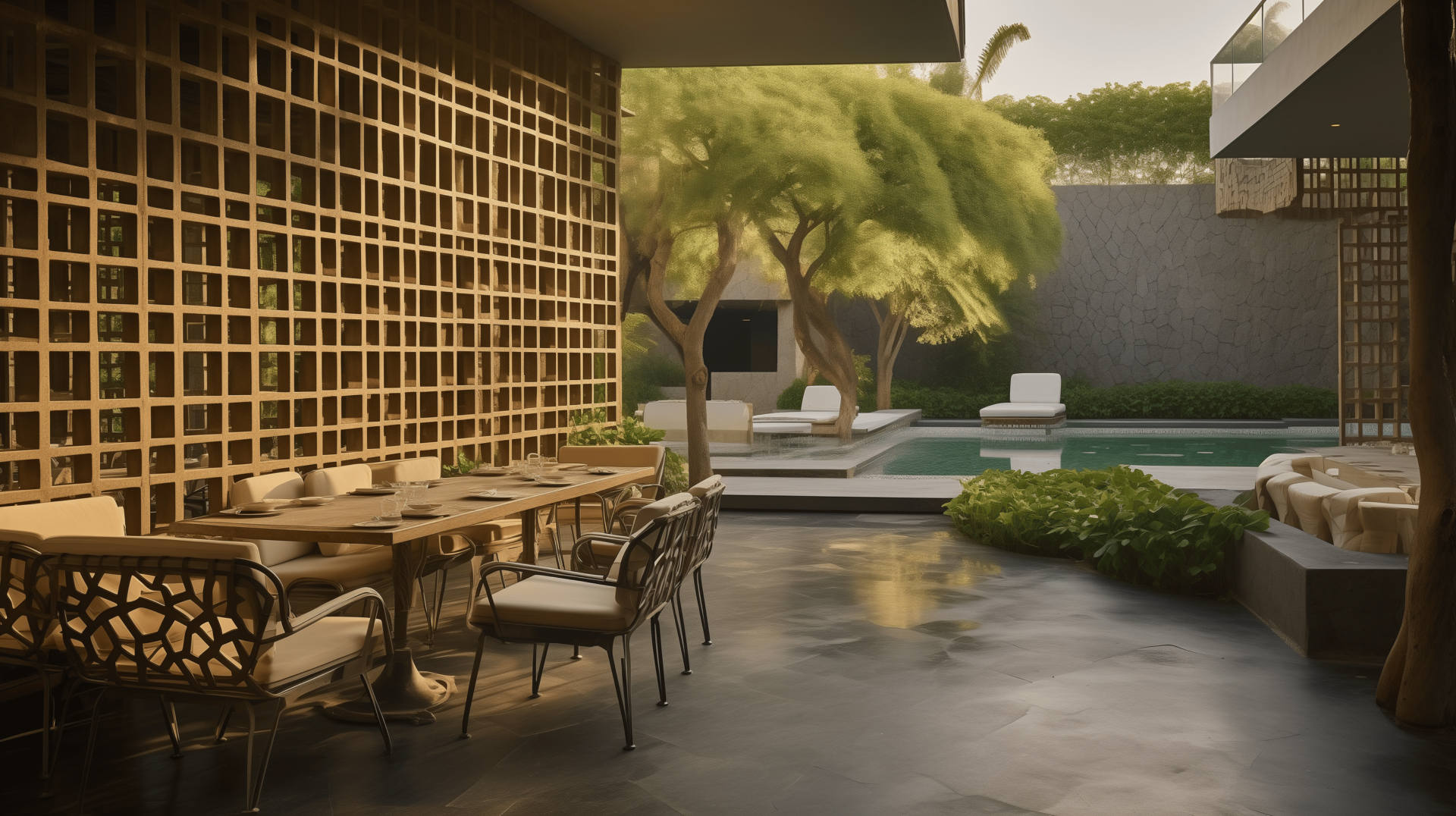
In the hospitality industry, creating serene, eco-friendly environments is critical to guest satisfaction. Breeze blocks can be used in hotels, restaurants, and resorts to create beautiful, sustainable spaces that connect guests with nature. For example, a breeze block wall might open onto a lush garden or a rooftop terrace, offering an intimate outdoor space that feels integrated into the architecture.
The energy efficiency benefits of breeze blocks also align with the growing demand for eco-conscious travel experiences. Hotels and resorts that use breeze blocks can reduce their environmental impact while offering guests a comfortable, natural setting for relaxation and recreation.
Iconic Projects: Global Examples of Breeze Block Innovation
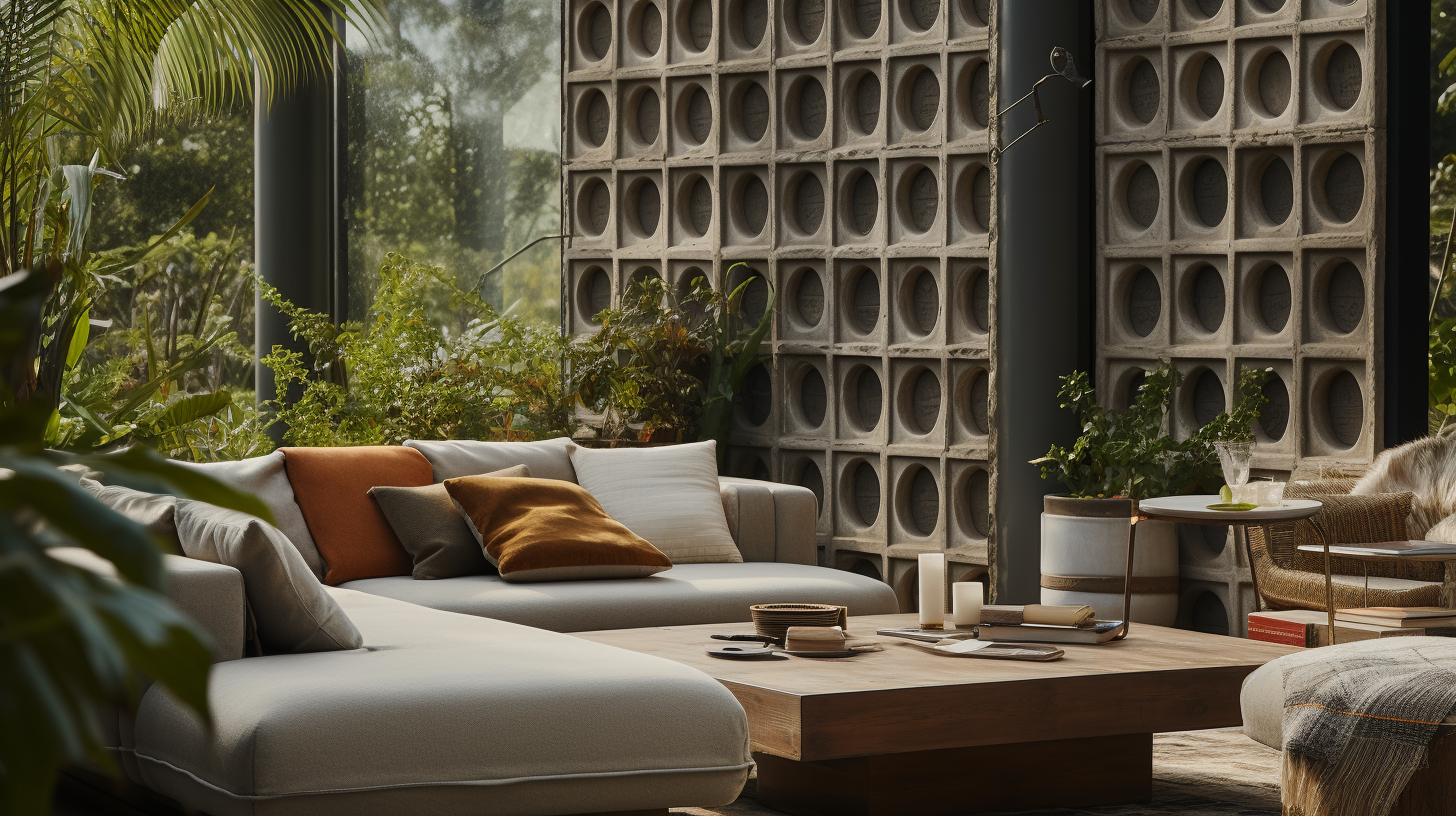
Architectural icons around the world are incorporating breeze blocks in innovative ways. The Balconies Building in São Paulo, Brazil, by MMBB Arquitetos, uses breeze blocks extensively to provide natural ventilation while shading interior spaces from direct sunlight. In Melbourne, the Design Hub by RMIT integrates breeze blocks into its façade, creating a dynamic, light-filled space that connects the interior with the exterior.
These projects are proof that breeze blocks are not just a relic of mid-century architecture — they’re key to building the future of sustainable, biophilic commercial spaces.
Breeze Blocks in the Future of Net-Zero Architecture
Modular Breeze Block Systems for Faster Construction
One emerging trend in the use of breeze blocks is modular, prefabricated systems that can be integrated into commercial building designs. These systems allow architects to create custom breeze block patterns while reducing construction waste and time. As modular construction becomes more popular, expect to see breeze blocks at the forefront of this innovation.
Circular Economy & Adaptive Reuse
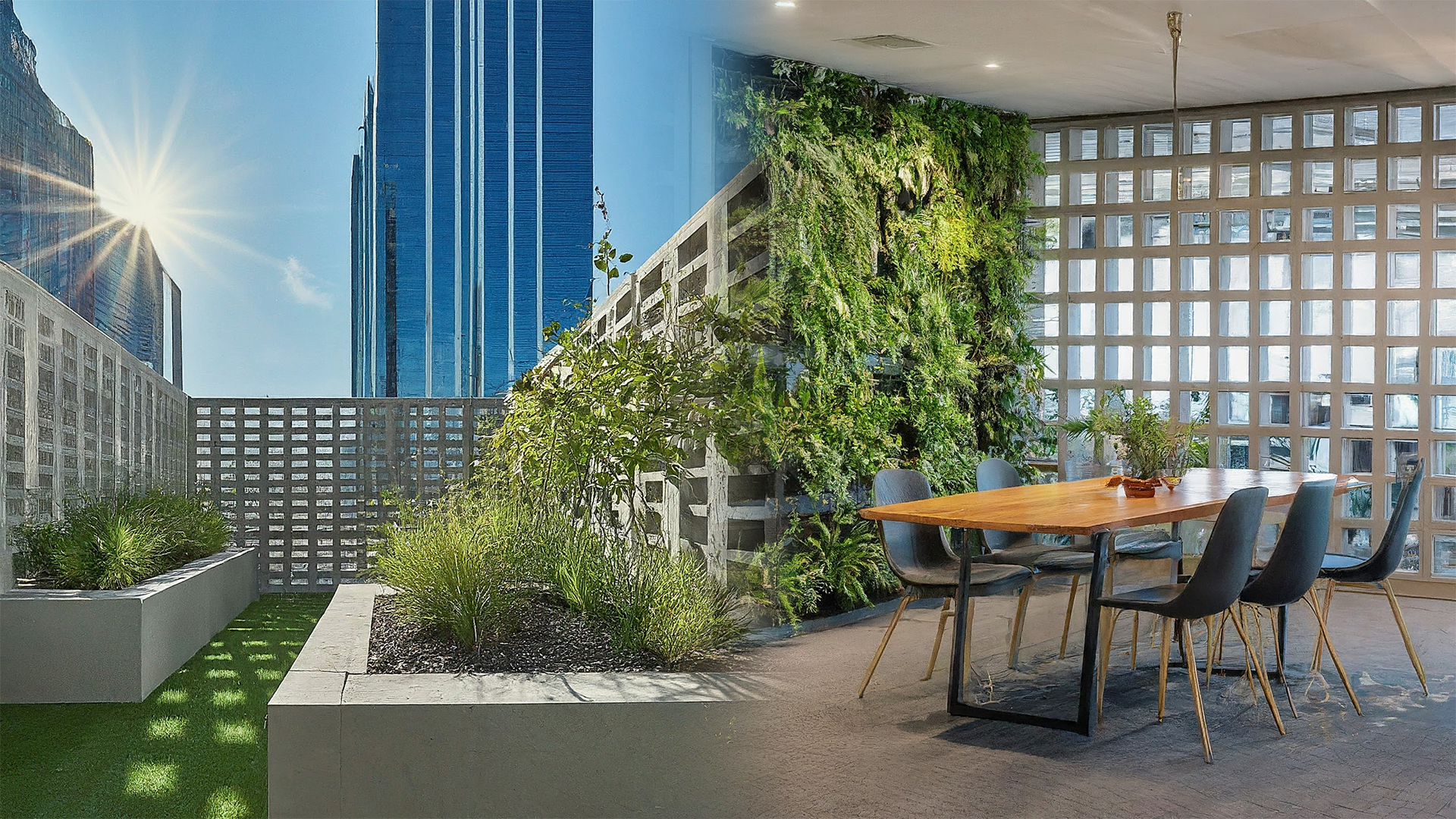
Breeze blocks also play a role in the circular economy by promoting adaptive reuse. Their durability makes them an ideal material for repurposing in new construction, reducing the need for virgin materials and minimizing waste. As more cities embrace adaptive reuse to preserve heritage buildings and reduce demolition waste, breeze blocks will be a key part of sustainable urban development.
Conclusion: Breeze Blocks as Catalysts for Green Commercial Spaces
The future of commercial architecture demands sustainability, energy efficiency, and a strong connection with nature. Breeze blocks provide a unique solution that checks all these boxes. By using breeze blocks to improve airflow, reduce energy consumption, and foster indoor-outdoor harmony, developers can create buildings that are not only beautiful but also resilient and environmentally responsible.
As architects and urban designers, it’s time to embrace breeze blocks as a vital tool in our quest to build a greener, more sustainable world. Consider integrating them into your next commercial project — because the future of green architecture starts here.